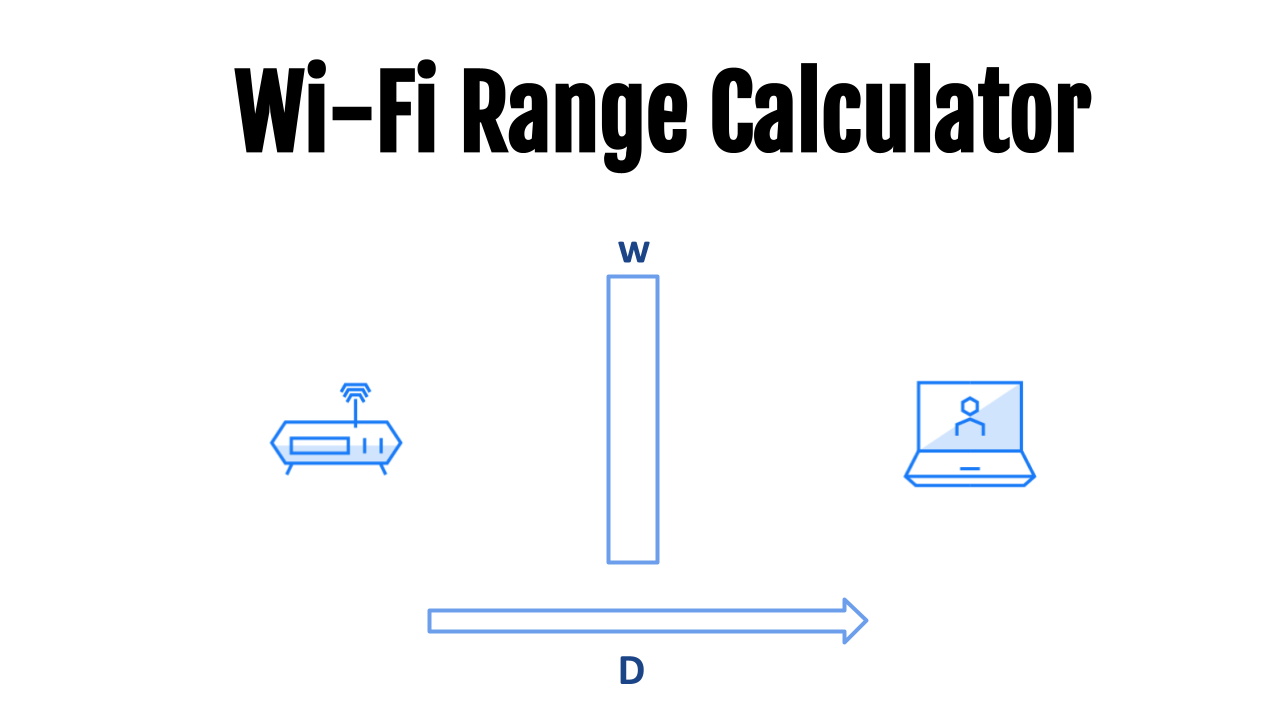When you install a WiFi network in your home, you might want to understand its range and answer questions like:
If I install my Wi-Fi router in the basement, will I be able to
- connect to my home network from the attic?
- connect to the router from my back yard?
Calculator
You will need to input:
- Distance from the Wireless LAN Access point or Router in meters or feet
- Number of walls that separate the router from your laptop or tablet
The calculator will output the RSSI in dBm. This RSSI value can be used to understand the quality of your Wi-Fi connection. The higher the RSSI the better and faster your connection to the internet.
🛜 Plan your wireless network using the Wi-Fi Access Point Calculator
What does RSSI in a Wi-Fi network mean?
RSSI stands for Received Signal Strength Indicator. The further away the device is from the Wi-Fi hotspot, the lower the value of RSSI.
Here is a table that tells you what the level needs to be for good performance.
| RSSI (dBm) | Quality | What does it mean? |
|---|---|---|
| -30 to -20 | Excellent | No issues |
| -50 to -31 | Very good | No issues |
| -65 to -51 | Good | Adequate for streaming although you might have issues with interference in apartment buildings |
| -90 to -66 | Poor | Might work but will have issues with streaming and dropped connection |
| Less than -90 | Very poor | The network cannot be used |
Levels in the first column will result in the performance level indicated in the second column. The impact is specified in the third column.
What is dBm?
dBm is the power in dB referenced to one milliwatt. It is commonly used in wireless systems like Wi-Fi, 4G and 5G. Here are a couple of useful calculators to convert from:
- dBm to Watt
- Watt to dBm
The dBm to percent calculator gives an intuitive feel for how good the Wi-Fi signal is.
Note that the received signal strength value in Wi-Fi systems is typically a negative number (e.g. -70 dBm)
However manufacturers will sometimes use a positive number. For instance a RSSI value of 50 with min and max values of 0 and 255, respectively.
🛜 Use this calculator to convert RSSI to dBm
What impacts RSSI?
A consumer Wi-Fi access point typically transmits +20 dBm and the strength decreases exponentially with distance. Floors and walls also attenuate the signal level. This is why the dBm value of the received signal at the laptop or phone is always negative.
How to improve RSSI?
To improve signal levels, reduce the number of obstructions and the distance between the Wi-Fi router and any client devices.
In laptops and Wi-Fi devices, the antennas are embedded within the device and the customer has no access to them. In general however, antennas have a significant impact on performance. In the case of laptops there is the option to use a USB Wi-Fi dongle with an external antenna. This will improve performance significantly.
What is the maximum range of a Wi-Fi network?
Based on the table above, an RSSI value of lower than -90 dBm makes the network unusable. The maximum range based on the calculator is 60 meters or around 200 feet.
At distances greater than this you will not be able to connect to your Wi-Fi network. Note that if there are any walls or other obstructions the range will be reduced even further and will be less than 200 feet.
RSSI vs Distance
This table shows the values of RSSI versus distance from a Wi-Fi hotspot. We’ve picked threshold values as per the table above for the different performance levels
| RSSI (dBm) | Performance | Distance (ft) | Distance (m) |
|---|---|---|---|
| -30 | Excellent | 6 | 2 |
| -50 | Very good | 18 | 6 |
| -65 | Good | 40 | 12 |
| -90 | Poor | 200 | 60 |
Note that these values are calculated indoors with no walls or floors between the router and the client device (laptop for example). Walls or floors will reduce the distance further.
References
[1] Modeling Signal Attenuation in IEEE 802.11 Wireless LANs – Vol. 1 by Daniel B. Faria
